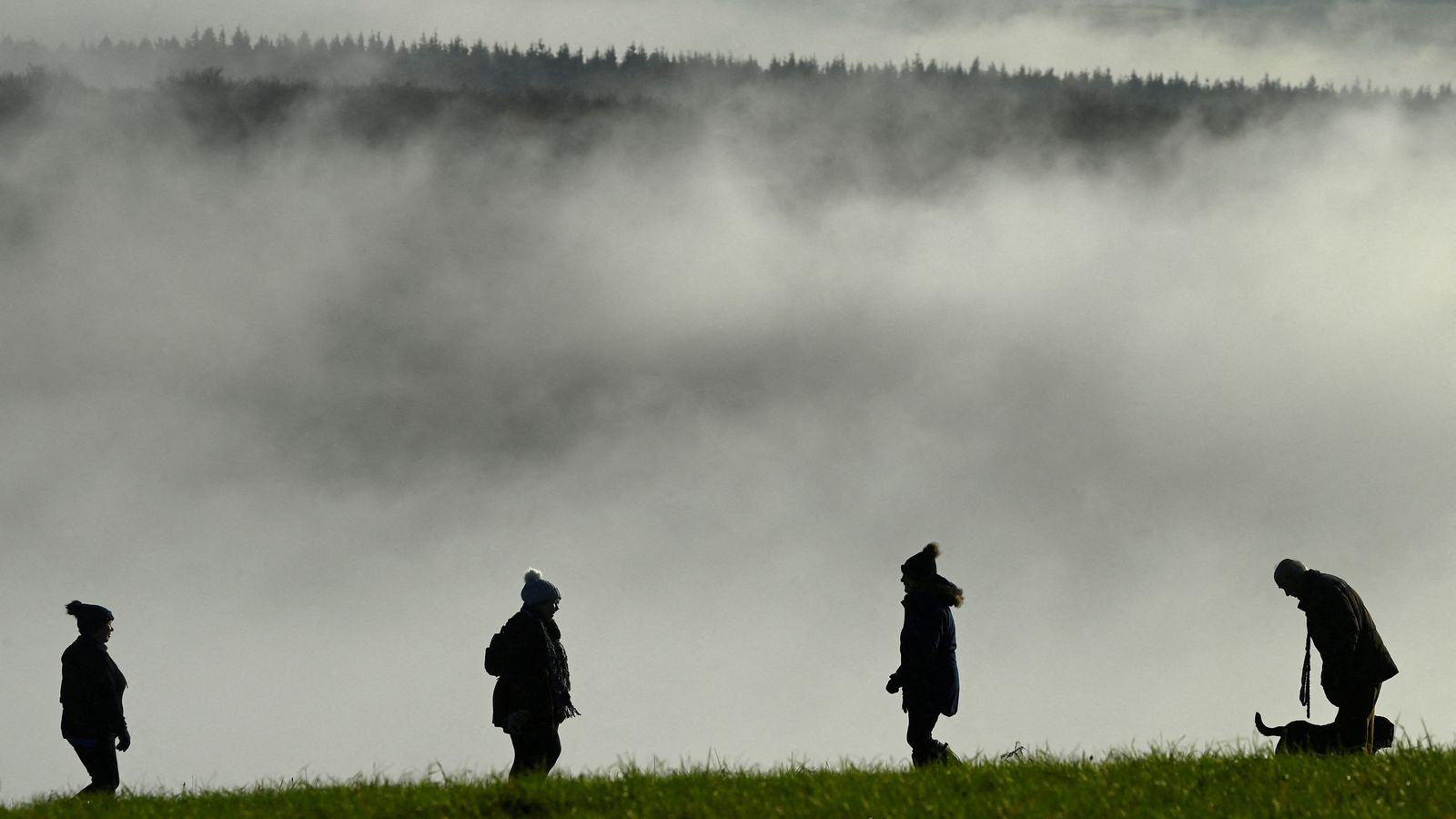An Arctic blast threatens to send temperatures tumbling even further across the UK in the coming week.
Following the chill brought by a northeasterly breeze in recent days, forecasters expect it to turn even colder from Wednesday, hovering closer to freezing during the day and dipping below overnight.
It raises the prospect of snow in the North, particularly over the Scottish mountains, with temperatures remaining below average.
UK weather: The latest Sky News forecast
There is a yellow weather warning in force for the far north mid-week, with snowfall of up to 10cm (4in) predicted in parts, causing travel disruption.
Strong northerly winds also pose the risk of drifting and blizzard conditions.
While clear or sunny spells are most likely in the West, it is warned this could lead to some hard frosts at night.
UK weather: Yellow warnings issued as heavy rain could cause travel chaos amid train strike
UK weather: Yellow warnings issued as heavy rain and train strike set to cause travel disruption
UK weather: Yellow warnings extended as forecasters say heavy rain and strong winds on the way
Sky News meteorologist Kirsty McCabe said: “It’s the first notable cold spell of the winter, and it will turn even colder from the North next week as the winds swing round to a more northerly direction.
“That will introduce a feed of colder air all the way from the Arctic.
“As well as making it feel much colder, Arctic air is lovely and clean and brings sparkling winter sunshine with great visibility.
“However, it also means frosty nights and an increasing risk of sleet and snow in any showers.
“The Met Office has already issued a yellow snow warning for parts of northern Scotland and the Northern Isles on Wednesday, as snow showers could cause travel disruption.
“Accumulations of 2 to 5cm (0.7 to 2in) are possible at lower levels, with 5 to 10cm (2 to 4in) of snow above 200m.
“The strong northerly winds will bring an additional risk of drifting and blizzard conditions.”
Although still early days, the chance of a white Christmas appear more remote, with hints of milder, wetter conditions pushing in around mid-month, raising temperatures.
Forecasters predict the North and East are most likely to hold on to colder conditions for longest.
Any transition between the cold and mild conditions brings the risk of rain, with sleet and snow especially over the hills.
It is unclear if the cold snap will stop this year, ending up as the warmest on record going back to 1884 following the mild autumn.
Provisional figures show autumn 2022 – September, October and November – was the third warmest on record for the UK, with an average temperature of 11.1C which is topped only by 2011 and 2006 in the record.
November has continued 2022’s run of every month being warmer than average, and the first 11 months of the year are the hottest on record for the UK.
Rainfall for the season was also well above average for many areas, including southern England, much of which had been in drought status by the end of summer.









